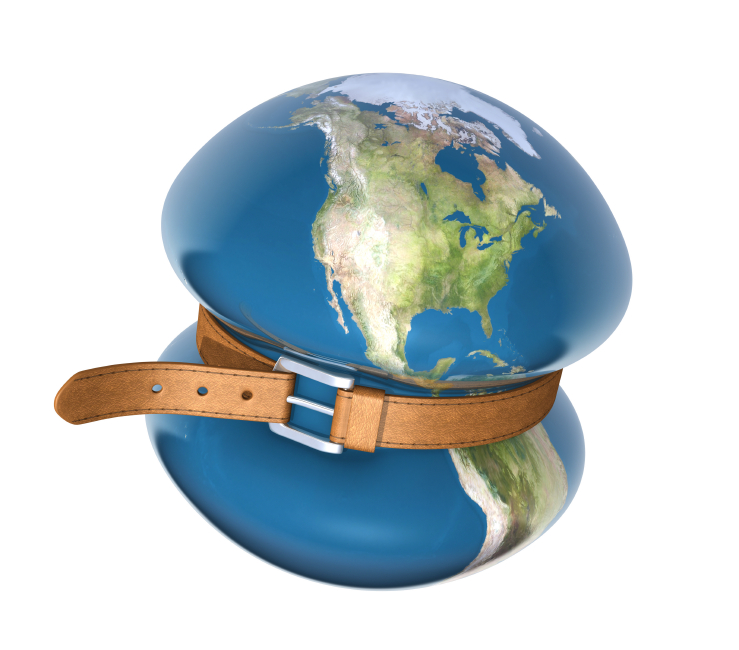March 2020
HENRYs (High Earners Not Rich Yet) with Limited Wealth-Building Potential- Are You One of Them?
The term HENRY (High Earners Not Rich Yet) refers to individuals who have the potential to become wealthy in the future because of their income. These individuals or families earn between $250,000 and $500,000 per year and are between 25 and 45 years of age (Gen Z, Millennials, and Gen X). Despite their income, after paying their living costs, taxes, and other expenditures, HENRYs have little left over to save and invest for their retirement. HENRYs are a demographic that politicians consider being ‘rich,’ referring to them as the wealthiest Americans during the 2008 elections. However, there’s more to the HENRY story.
‘Rich’ is when you have assets in savings, retirement accounts, and other income-producing investments. Not the material things that you own and not things you owe on. HENRYs are the ‘working rich’ because most of what they make is immediately spent. Unlike the wealthiest 1% of Americans who continuously work to build their assets.
The Plight of the HENRY
Part of the plight of HENRYs is that their wealth projects from their six-figure income, not their spending habits or the building of wealth through investing. Additionally, HENRYs tend to want to keep up their appearance of success by spending. They are easily targeted by advertisements showing the lavish lifestyle they desire, and they frequently spend on those items.
According to research by MoneyinMotion, the top industries employing HENRYs include banking and finance (including insurance), technology, and large retailers generally holding manager or VP titles. Their top purchases include:
- Diet, weight loss, exercise memberships
- Boating and sailing
- Entertainment
- Online shopping
- Automobiles
- Vacations
While HENRYs have the potential to be wealthy, many will not fare well in retirement. This is due to their lack of retirement assets. If you are a High Earners Not Rich Yet, you still have the potential to save enough for retirement. However, those that continue the same spending habits with little priority on retirement savings during the earning years will not yield the retirement they desire. If you need financial guidance to change your current spending or accumulate retirement assets, feel free to contact our office at any time.
SW6-20200224
Northland Financial LLC assists families and individuals with retirement income planning. As well as Medicare, Social Security, life insurance, IRAs, college planning, and asset management. Contact us today to schedule an appointment.
Financial Planning and Living Globally
The past 100 years have seen changes in how people plan for their financial futures and how they live. Borders no longer restrict people from living in one country; their profession often takes them to parts of the world they never anticipated. Today, it’s not uncommon for a family to live part-time in one country or become citizens of another country to work or have a business there. Living globally is a lifestyle that many high net worth families, and others, are choosing. Financial planning and living globally what are the risks?
Dual Citizenship
The U.S. doesn’t formally recognize dual citizenship but has not taken any stand against it either politically or legally. U.S. law doesn’t mention dual nationality or require a person to choose one nationality or another. However, a U.S. citizen may ‘naturalize’ in a foreign state without losing their U.S. citizenship. Not all countries are this liberal, creating financial planning complexities for U.S. citizens that choose to live abroad. Additionally, many foreign governments don’t recognize trusts that were formed outside of its borders on assets located inside its borders.
For high net worth families, protecting assets across multiple borders needs to be well planned out and consider the ‘laws of the land’ the individual occupies at the time of their death. Therefore, setting up trusts within each country of citizenship is imperative if the assets are within that country’s borders.
Taxation Across Borders
A secondary issue is the taxation of beneficiaries regardless of where they live. Since the financial crisis, many countries now participate in a global Common Reporting Standard and Exchange of Information agreement. The goal of this agreement is to determine and clarify the personal financial information they must share regarding assets, income, and taxable amounts across international borders. The agreement helps prevent tax evasion by individuals who choose to live globally, as a means of avoiding paying taxes.
While working or owning a business located in another country may not be the only reason for living globally, for many, retiring to another country to stretch retirement assets is.
There’s a tremendous amount of change occurring globally- economic uncertainty, political unrest, rising tax rates, gender equality, and changing views of marriage. These reasons are why financial planning is essential to protect your assets and those you intend to leave to beneficiaries. Before deciding to live globally, or if you already are, consult legal professionals in the countries you plan to reside in, even if for only part of each year.
The World is Changing
With the expansion of wealth, planning for divorce, same-sex marriages, gender fluidity, and extended families through new marriages while living globally intensifies financial planning. The world will continue to evolve. Investors must keep themselves informed of laws that enhance or create financial planning problems for them or their heirs.
If you are considering living or working globally, I encourage you to meet with me to discuss your investments before relocating.
SW6-20200224
Northland Financial LLC assists families and individuals with retirement income planning. As well as Medicare, Social Security, life insurance, IRAs, college planning, and asset management. Contact us today to schedule an appointment.
Green Lending in the United States: Benefits for Sustainability and Debtors
A growing trend in global debt markets, Green Lending, continues to grow among American debt investors. Green Lending ties sustainability initiatives into loan products designed to entice and reward debtors who meet sustainability goals. The debtor’s sustainability goals are performance-based and include such things as lowering electricity and water usage, reducing landfill garbage, increasing recyclable raw materials in production, and initiatives to reduce their carbon emissions. Meeting these performance goals rewards the debtor with a reduction in the spread of their loan’s interest.
In some instances, the debt’s use is to implement sustainability initiatives in factories owned by the debtor. Being able to reduce their carbon footprint is usually advertised by these debtors, increasing their sales in a worldwide market that demands sustainability in the products they buy.
The Driving Force Behind Sustainability
Who is the driving force behind corporate lending tied to sustainability? It’s the investors who are driving this change, not the lenders. According to Bloomberg, ‘Green Finance’ is now a $92 Trillion worldwide business and growing- per 2018 data. In the U.S., sustainable assets reached $12 Trillion in 2018; the 2019 numbers are still to be determined.
Money is gushing from investors into any investment labeled green or sustainable. In the past, sustainable and green was a description of a company’s products. Today it is descriptive of both the company’s stocks and debt. The debt markets continue to evolve by offering green debt, with rewards to the debtor, for their sustainability efforts.
Some investments are greener than others, while some offer sustainability in only one area, like electricity use reduction. In finance, there is no agreed-upon definition of what green truly is, but new sustainability standards were issued in 2019 that global companies now follow. However, it is the responsibility of the advisor and the investor to research the debtor’s use of the loan and its sustainability benefit before investing since not all ‘green notes’ will be within the standards.
In addition, if you have questions about green lending here in the U.S. or what companies are reducing their carbon footprint, feel free to reach out to me to discuss your interest in green lending.
SW6-20200224
Northland Financial LLC assists families and individuals with retirement income planning. As well as Medicare, Social Security, life insurance, IRAs, college planning, and asset management. Contact us today to schedule an appointment.
Climate Change and Finance: Are They Connected?
Over the past ten thousand years, the Earth’s climate has remained stable. Today, we know through science and research that climate change is happening. Many scientific organizations are studying the impact of climate change. While simultaneously economists are examining the socioeconomic implications in various regions of the world. Climate change is undoubtedly impacting finance and the economy in many areas. How much it will continue to reshape the global economy is unknown, but the financial sector is already shifting capital towards tackling climate change in many parts of the world.
Three Implication of Global Warming
There are variations of impact, even within a country’s borders, that will continue to affect production and ultimately, finance. For example, global warming affecting outdoor laborers or crop yields. While rising floodwater inside a factory causes loss of production time due to facility damage, within the same country 500 miles apart. In McKinsey Global Institute’s January 2020 report, Climate Risk and Response: Physical hazards and Socioeconomic Impacts, three implications of global warming stand out:
Systematic- While the direct impact of climate change is local, it can have knock-off effects across regions and sectors, through interconnected socioeconomic and financial systems.
Regressive- The most impoverished communities and populations within each impacted area typically are the most vulnerable. Climate risk creates spatial inequality, as it may simultaneously benefit some regions while hurting others.
Under-Prepared- While companies and communities have been adapting to reduce climate risk. The pace and scale of adaptation are likely to need to increase to manage rising levels of physical climate risk. Adaptation will entail rising costs and tough choices that may include whether to invest in hardening or relocate people and assets.
The financial sector in many economies of the world is already preparing for the risks of global climate change. Aside from corporate social responsibility and green lending. There are fundamental reasons why banking and finance are creating standards for investing and allocating capital towards solving climate change. Some of the changes include moving money out of fossil fuels and toward greener renewable fuels and projects, for example.
Changing Policies
The International Monetary Fund (IMF) now has policies requiring IMF member banks (and their fund managers and investors) to disclose climate vulnerability and measure their country’s financial situation to respond to climate change. If a country is unable to invest in or fund substantial carbon-reducing initiatives, they are unlikely to receive IMF development monies. This, in turn, affects that country’s ability to lend towards business development within their borders.
The proof exists that climate change drives extreme weather-related disasters causing damage to infrastructures and economies. IMF data shows that even seven years after a climate-related disaster, the country’s GDP (Gross Domestic Production) remains 1% lower than it would’ve had the disaster not occurred. We know that climate change and finance are interconnected. What we do today will have an impact on our planet and its inhabitants.
SW6-20200224
Northland Financial LLC assists families and individuals with retirement income planning. As well as Medicare, Social Security, life insurance, IRAs, college planning, and asset management. Contact us today to schedule an appointment.










